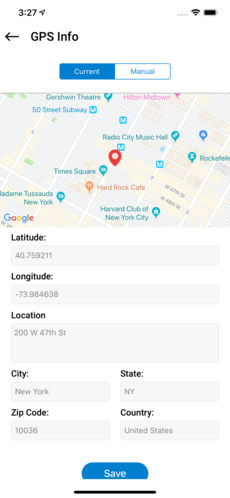

The field of visual place recognition (VPR) aims to solve this challenge by relying on the visual modality to recognize a place despite changes in the appearance of the perceived visual scene. To illustrate, we present the performance gain in landmark retrieval and tag suggestion by utilising the accuracy-enhanced geo-metadata.Īutonomous vehicles require precise and reliable self-localization to cope with dynamic environments. Hence, for downstream applications, improved results can be obtained with these more accurate geo-metadata. Experimental results show that our proposed pyramid-based method outperforms its competitors and reduces orientation errors by an average of 58.8%. To design a comprehensive model, we further incorporate smooth approximation and feature-based rotation estimation when formulating the error terms. As an alternative, we collect geographic context from OpenStreetMap and estimate the absolute viewing direction by comparing the image scene to world projections obtained with different external camera parameters. Given the small geo-distance between consecutive video frames, image-based localisation does not work due to the high ambiguity in the depth reconstruction of the scene. In this study, we focus on the challenging correction of compass readings and present an automatic approach to reduce these metadata errors. However, raw sensor data collected is often noisy, resulting in subsequent inaccurate geospatial analysis. You can find the latest car and bike news here.Videos recorded with current mobile devices are increasingly geotagged at fine granularity and used in various location-based applications and services.
#Check photo geotag android#
You can also stay up to date using the Gadget Bridge Android App. If you do not want to grant GPS permission to the camera, you can add the location manually after taking a picture.įor the latest gadget and tech news, and gadget reviews, follow us on Twitter, Facebook and Instagram. For newest tech & gadget videos subscribe to our YouTube Channel. Your camera will require GPS access for this feature. If you want your camera to automatically record the location of the pictures you take, turn on the geotagging feature. There were the top 7 methods to find a location from a photo. Read Also: Smartphone Comparison: Nothing Phone 1 vs iPhone 13 If you want to add a location to a picture, you can manually do that by clicking on the location tab and finding coordinates on the map.

However, if you’ve turned off the geotagging feature, the location tab will be empty. If you cant figure out where you took a particular picture, all you need to do is expand the details of the image and you will be able to see the location tag. Then head over to the details tab where you will find the location coordinates. Simply right-click on the image and select properties. Using an online tool or website is not all that necessary. Looking up the EXIF data for an image is a pretty easy process. The website has a basic design and is pretty easy to navigate but you may encounter a lot of ads. Where is the PictureĪs the name suggests, Where is the Picture is a pretty straightforward website that tells you where the image was clicked. While it will not give you the exact location where the image was taken, it will show you additional images from the same area, or identify any popular landmarks that may be in the picture. If your image does not contain enough metadata to extract GPS coordinates, using a Google Reverse Image Search may help. Not only that, you can use Photo Location to add EXIF data to an image that does not have any. It gives you the exact coordinates of where the photo was taken. Photo Location reads the EXIF data from your image to extract the geo-location. If you do not want your pictures to be published you can change the privacy settings.

It also shows you images from the location your picture was taken in. But it goes one step ahead and opens those coordinates on a map. Like Metapicz, Pic2Map also reads the metadata from your photo to give you the coordinates of where the picture was taken.


 0 kommentar(er)
0 kommentar(er)
